Title : Sepsis in neonates: Prevalence of micro-organisms and their antimicrobial susceptibility pattern in the neonatal intensive care unit: A retrospective study
Abstract:
Background: Neonatal sepsis remains an important cause of neonatal morbidity and mortality worldwide, with a particularly heavy burden in low- and middle-income countries (LMICs). Emergence of multidrug-resistant (MDR) Gram-negative bacteria and increasing prevalence of non-albicans Candida species complicate empirical therapy and outcomes.
Objective: To determine the prevalence of culture-proven neonatal sepsis, describe the spectrum of isolated organisms and their antimicrobial susceptibility patterns.
Methods: This retrospective observational study was conducted in the Neonatal Intensive Care Unit (NICU) of the National Institute of Child Health (NICH), Karachi, from January 2020 to December 2021. Neonates ≤28 days with clinically and culture-confirmed sepsis were included, while contaminant isolates or incomplete data were excluded. Data on demographics, clinical features, pathogens, and antimicrobial susceptibility were collected and analysed using SPSS version 26, with p < 0.05 considered statistically significant.
Results: Of the 70 neonates with culture-proven sepsis, 40% had early-onset and 60% late-onset sepsis, with males comprising 61%. Gram-negative bacteria predominated (76%), particularly Klebsiella pneumoniae (35%), Staphylococcus aureus (23%), and E. coli (16%). Gram-negative isolates showed highest sensitivity to meropenem (78%) and amikacin (69%), while S. aureus remained susceptible to vancomycin (85%) and linezolid (81%). Fungal isolates (7%) were mainly Candida albicans.
Conclusion: Gram-negative organisms predominate in neonatal sepsis with high resistance to first-line antibiotics. Empirical therapy should follow local antibiograms with de-escalation based on cultures. Strengthened antimicrobial stewardship and surveillance are vital to control emerging resistance.



